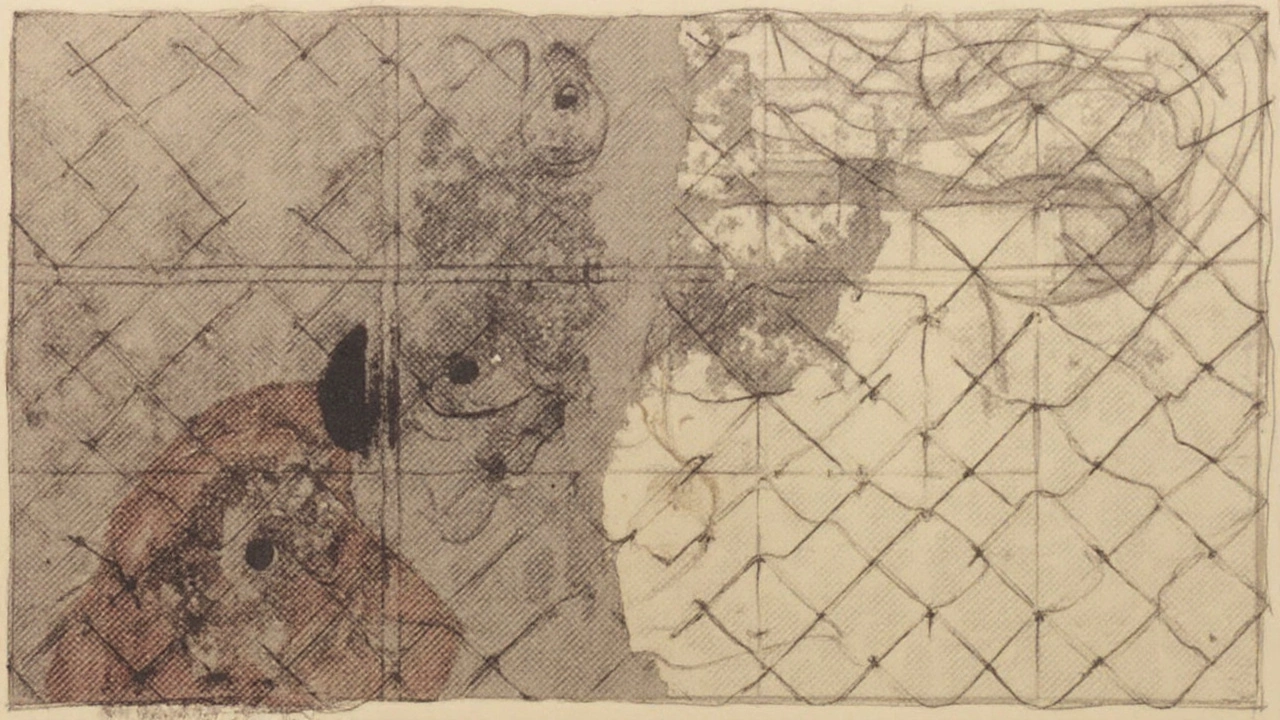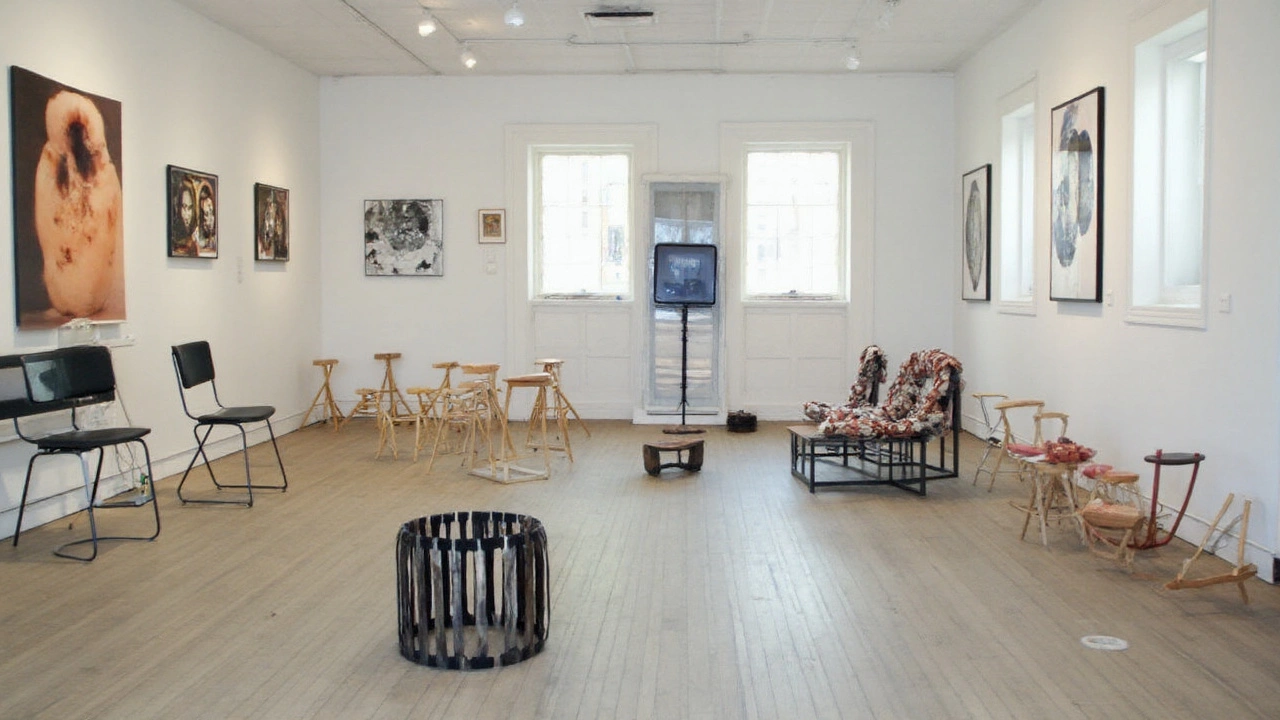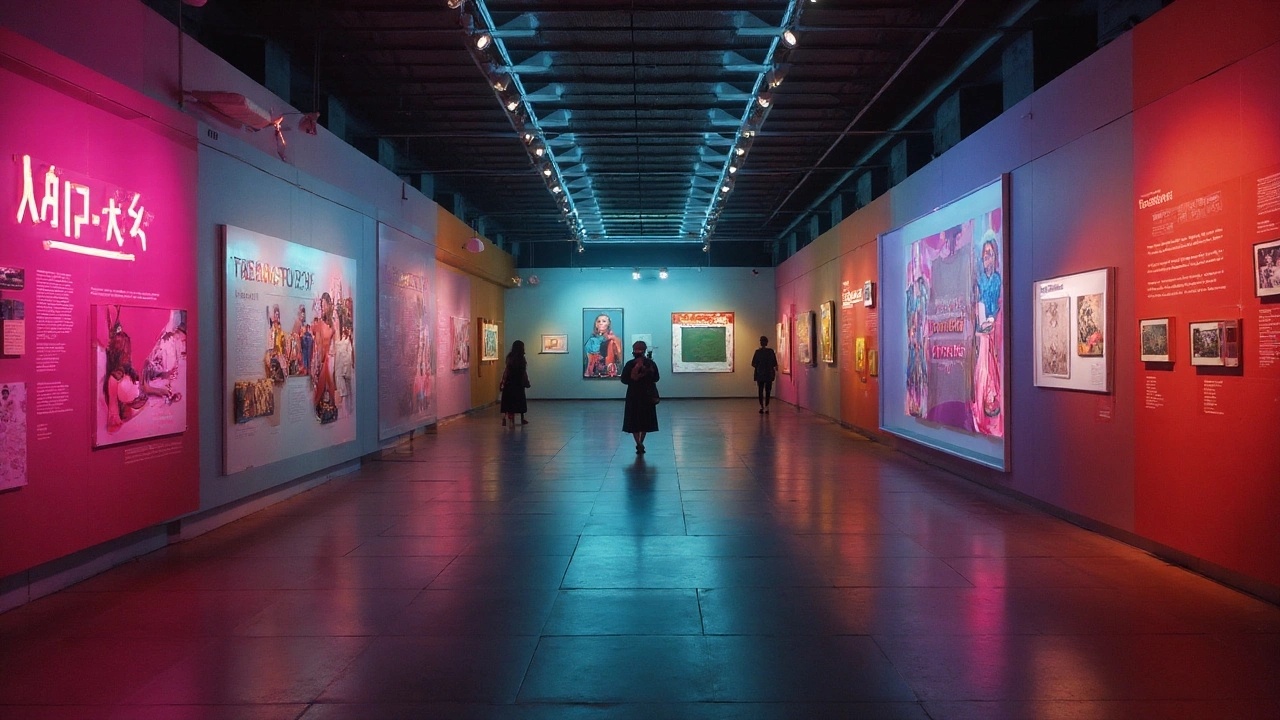Contemporary art can feel slippery: one show is an immersive room of light, the next is a pile of bricks, then a community meal. Here’s the useful bit you came for-there actually is a working set of principles artists use. They aren’t strict rules; they’re lenses that help you read, make, and talk about work without hand-waving. You’ll leave with a clear list, fast tests you can use in the gallery, and a simple plan for applying them to your own project.
TL;DR
- Idea leads: concept often comes before form or technique.
- Context is part of the work: site, history, politics, community.
- Process, participation, and time count as content, not extras.
- Hybrids rule: artists mix mediums, tech, and disciplines.
- Quality shows up as clarity, integrity, and impact, not just beauty.
The Principles of Contemporary Art, Demystified
These are the foundations artists, curators, and critics use day to day. Think of them as practical lenses, not a fixed canon. Museums like Tate and MoMA frame contemporary art as post-1960s to today, where ideas, context, and new forms drive the work.
-
1) Concept leads craft - The idea shapes the form, not the other way around. Quick test: if you change the medium, does the idea still hold? If yes, you’re working concept-first. Example: Jenny Holzer’s text-based works switch formats (LEDs, projections, posters) but keep the core idea intact. Pitfall: a clever idea without care in execution reads as lazy; concept leading doesn’t mean craft disappears.
-
2) Context is part of the work - Site, history, politics, and audience shape meaning. A work about colonisation reads differently in Aotearoa New Zealand than in Europe. Test: does moving the work change the message? If yes, context matters. Example: site-specific installations commissioned for City Gallery Wellington hinge on place. Pitfall: ignoring cultural or community context can feel extractive.
-
3) Process is content - How the work is made, documented, and evolves can be the point. Test: if the making stopped early, would the meaning change? Example: Eva Hesse’s fragile materials show time and decay as part of the story. Pitfall: process talk as cover for weak ideas.
-
4) Participation counts - Viewers, communities, or systems co-create meaning. Claire Bishop wrote about this in relation to participatory art. Test: does the work need people to activate it? Example: Rirkrit Tiravanija’s shared meals. Pitfall: “interactive” buttons with no real stake are gimmicks.
-
5) Hybridity across mediums - Mixing film, sound, code, textiles, performance, or data is normal. Test: could this be in two museum departments at once? Example: Hito Steyerl blends essay film, installation, and research. Pitfall: stacking mediums without a reason muddies the message.
-
6) Critical inquiry - The work examines power, identity, labour, land, tech, or the market itself. Test: what question does this work pose that a painting alone could not? Example: Forensic Architecture investigates human rights cases with spatial analysis. Pitfall: stating a stance without evidence or nuance.
-
7) Plural voices and decolonial awareness - Contemporary practice centres many histories, not just a Western one. Test: who is represented, who benefits, and who is credited? Example: works that foreground Indigenous knowledge systems here in Aotearoa. Pitfall: token inclusion without shifting methods or authorship.
-
8) Time and ephemerality - Change, performance, and disappearance are valid materials. Test: if it can’t be “owned” in a fixed form, is it still art? Yes-performance, events, and social practice fit. Documentation becomes part of the work.
-
9) Documentation as a layer - Photos, video, transcripts, and code repositories carry the work forward. Test: could a well-made document be the most durable version? Many biennials rely on this. Pitfall: over-documenting can flatten a live experience.
-
10) Collaboration and networks - Teams, communities, and platforms shape authorship. Test: is authorship shared or credited across roles? Example: community-led murals and research-based art. Pitfall: unpaid labour or vague credits.
-
11) Tech-native thinking - Code, AI, AR, gaming, sensors, and data can be the medium or the subject. Test: would this work make sense offline? If not, it’s probably tech-native. Example: web-based generative works that change with real-time data. Ethical note: be transparent about datasets and training.
-
12) Material honesty and sustainability - Material choices carry meaning (recycled, local, fragile, industrial). Test: can you explain why this exact material matters? Example: reuse of building waste in post-quake Christchurch projects. Pitfall: greenwashing without lifecycle thinking.
-
13) Openness and ambiguity - Ambiguity isn’t a flaw; it invites thought. Test: does the work allow several readings without collapsing into confusion? Pitfall: obscurity that blocks access.
Market context and institutions are evolving around these principles. The Art Basel & UBS Art Market Report 2024 noted growth in experiential and digital-first presentations, which matches the shift toward participation and tech-native practices. Museums like Tate, MoMA, and Te Papa routinely frame new commissions in terms of concept, context, and audience activation, not just medium.
| Axis | Traditional (Modernist) | Contemporary (Now) |
|---|---|---|
| Main aim | Form, mastery, originality | Idea, context, experience |
| Value sits in | Object and technique | Concept, process, relation |
| Role of viewer | Observer | Participant/Co-author |
| Mediums | Painting, sculpture | Hybrids (video, code, social practice, performance) |
| Time | Fixed, permanent | Durational, evolving, ephemeral |
| Authorship | Individual genius | Teams, communities, networks |
| Display | White cube | Site-specific, public space, online |
| Documentation | Record of the object | Constituent layer of the work |
| Success metric | Beauty, craft, rarity | Clarity, relevance, impact, integrity |
If you remember one thing, remember this phrase: contemporary art principles are working lenses-idea, context, process, participation, hybridity, and critical inquiry-used to make, read, and judge art today.

How to Use the Principles: Analyze, Create, Critique
Here’s a simple way to put all this to work in a gallery, studio, or classroom. I use this around Wellington-from Te Papa to pop-ups on Cuba Street-and it keeps conversations honest and concrete.
Analyze any artwork in 5 steps
- Name the idea - In one sentence, what is the work trying to say or ask? If you can’t say it, the wall text should help. Note any stated research question.
- Track the context - Where is it shown? Why here, now, and to whom? List at least two context factors (local history, community, politics, online platform).
- Map the form to the idea - Medium, materials, scale, and time. Explain how each choice supports (or fights) the concept.
- Find the activation - Is there participation, performance, or change over time? If yes, what rules or conditions shape it?
- Check integrity - Does the work credit sources and collaborators? Are claims backed up by research? Does documentation match the experience?
Make your own contemporary piece (quick plan)
- Start with a question, not a medium - “How do coastal storms change how we feel about home?” beats “I’ll make a video.”
- Choose context on purpose - Gallery, street, school, online, marae-each shifts meaning. Write your reason in one line.
- Pick the form that best delivers the idea - Installation, performance, zine, AR filter, community workshop. If two forms tie, prototype both and test with three people.
- Design participation - If you want people involved, write the “rules of play.” What do they do? How long? What do you give them back?
- Plan documentation - Photos, transcript, code repo, or a booklet. Decide who it’s for: funders, future viewers, your own archive.
- Credit and ethics - Draft consent forms if needed, credit collaborators, budget for their time, honour cultural protocols.
Heuristics that save time
- 3C Rule - Concept, Context, Conversation. If you can explain those three in 60 seconds, you’re ready to show the work.
- Why this? Why now? Why you? - If you can’t answer, the project will drift.
- 1-3-1 Test - One clear idea, three supporting choices (material, site, time), one memorable takeaway for your viewer.
- Audience ladder - Looker → Participant → Co-author. Pick one rung and design for it; don’t try to hit all three at once.
Common pitfalls (and fixes)
- Shock without substance - Fix: write your research sentence; add sources, evidence, or lived experience.
- Medium soup - Fix: cut one medium that doesn’t push the idea.
- Token participation - Fix: give participants real agency or value (voice, credit, paid roles, a take-home artifact).
- Context clash - Fix: if the site fights the message, move it or add framing (text, facilitator, community partner).
- Ethics gap - Fix: consent, credit, cultural guidance. If it’s not yours to tell, collaborate or step back.
Mini case: Wellington coastal erosion project
Idea: climate anxiety and home. Context: waterfront pop-up during a storm season. Form: a low-lit room with slowly rising water lines projected, synced to MetService data; a recording booth for people to share 30-second voice notes; a map pinboard for relocation stories. Participation: visitors choose to add their home’s first flood date. Documentation: audio archive + a small book of anonymised quotes. Ethics: consent labels, links to support services, community partners for climate and housing. This single-page plan hits concept, context, process, participation, tech-native thinking, and documentation.
How to critique with care
- Lead with what the work is trying to do, not what you wish it did.
- Point to choices, not personality: “The site choice dilutes the history” beats “You don’t care about history.”
- Ask for the rulebook: “What did success look like to you?” Then test against it.
Sources worth knowing: Tate and MoMA glossaries for definitions; the Art Basel & UBS Art Market Report for trends and scale; Claire Bishop on participation; Nicolas Bourriaud on relational aesthetics; Creative New Zealand’s reports for local participation data. You don’t need to agree with any one of them; use them to sharpen your own view.

Cheat Sheets, Comparisons, and FAQs
Quick checklist (use in the studio or gallery)
- Idea in one sentence (question or claim).
- Context picked on purpose (where, who, why now).
- Form fits idea (material, scale, time).
- Participation designed (if any) with clear rules.
- Documentation plan and audience.
- Credits and consent sorted; sources cited.
- One memorable takeaway for your viewer.
Decision cues
- If your idea depends on local memory → choose a site-specific action and invite stories.
- If it depends on change over time → use performance, sensor data, or scheduled triggers.
- If it depends on debate → design a format for safe disagreement (moderated talkback, printed prompts).
- If it depends on material truth → pick materials with visible histories (recycled, worn, fragile).
- If it depends on systems → make the system visible (screens, diagrams, open code).
Examples you can map to the principles
- Text projections in public space → concept-led; context-heavy; participation through public encounter.
- Community archive of protest signs → collaboration; documentation-as-work; ethics and credit are core.
- AR trail across a city → tech-native; site-specific; time-based (updates), participation via movement.
- Fragile bio-material sculpture → material honesty; process and decay; documentation needed.
Mini-FAQ
Are there “official” principles?
Not a single fixed list. But across museums, schools, and critical writing, the same lenses appear: concept, context, process, participation, hybridity, and critical inquiry. This guide distills that shared practice.
How are these different from the “elements and principles of design” I learned in school?
Elements/principles (line, color, balance) are formal tools mostly for visual composition. Contemporary principles speak to idea, context, time, ethics, and audience-how art functions in the world.
Can a beautiful painting still be contemporary?
Yes, if it’s idea-driven and conscious about context and time. Plenty of painters are contemporary because of their concepts, research, and modes of display.
Where does AI art fit?
It’s tech-native. The key questions are transparency (datasets, prompts, training), authorship (who did what), and concept (what is the work asking?). The tool alone doesn’t make it interesting.
Is participation always required?
No. Many strong works are non-participatory. Use participation if it’s the best way to deliver the idea, and design it with real care.
How do I judge quality without defaulting to “I like it”?
Use four tests: clarity (idea reads), relevance (why here/now), integrity (ethical, credited, researched), and fit (form matches concept). Taste comes after.
Do I need a wall text?
If the work relies on context or research, a short text helps. Aim for 120-150 words, answer the three Whys (this, now, you), and avoid jargon.
Next steps
- Students - Take one recent show and write a 5-sentence analysis using the 3C Rule. Time yourself: two minutes. If you run long, the idea isn’t clear yet.
- Artists - Prototype your idea in 48 hours with whatever is at hand. Show three people. Ask only: “What did you think it was about?” Adjust form until their answer matches yours.
- Curators/Teachers - Build a 30-minute walkthrough: ask visitors to identify idea/context/form on one work each, then present back. People learn fast when they teach.
Troubleshooting
- “My project is messy and unfocused.” - Cut one medium. Re-write your idea in 12 words. Move the piece to a better context.
- “People didn’t engage.” - Lower the barrier (clear sign, one simple action), add feedback (a visible result), and give value (credit, artifact, insight).
- “It feels derivative.” - List three references; now flip one constraint (change scale, site, time, or audience). Bring in a lived experience you actually hold.
- “I’m worried about ethics.” - Pause. Get consent, pay collaborators, seek cultural advice, and be transparent about sources and methods.
- “The work dies after the show.” - Plan a durable document (short video, PDF, code repo) and a home for it (your site, a library, a partner archive).
The point isn’t to memorize a textbook list. It’s to build a small, sharp toolkit you can use at Te Papa, in a school studio, or on a windy Wellington wharf. If you can name the idea, pick the right context, and design the form to fit, you’re already doing contemporary art with confidence.

